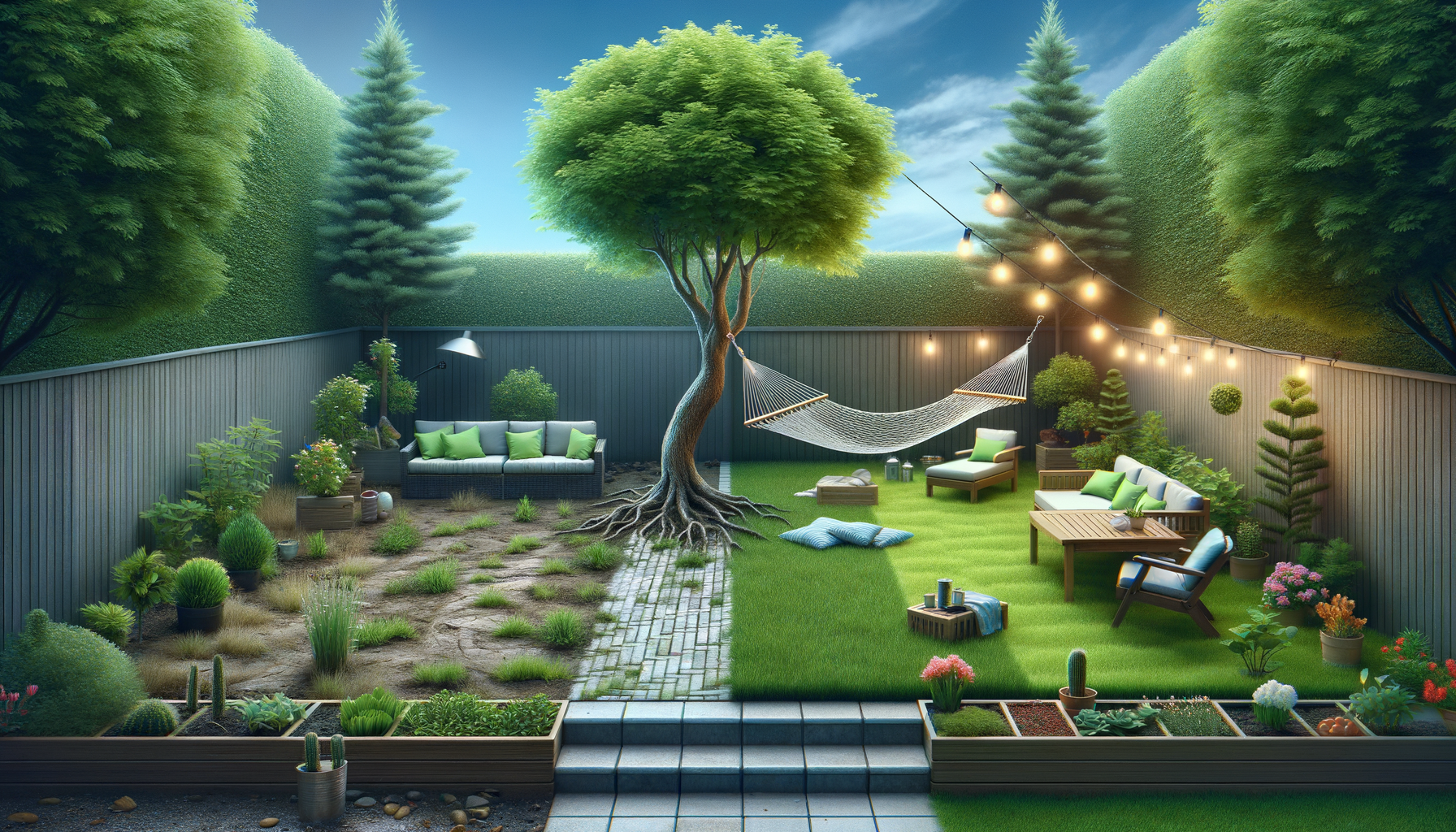Understanding Your Space
Before embarking on any yard design project, it’s crucial to understand the space you have. This involves assessing the size, shape, and natural features of your yard. Consider the sunlight patterns throughout the day, the type of soil, and any existing vegetation. Understanding these elements can help you make informed decisions about what plants to choose and where to place them. For instance, if your yard receives ample sunlight, you might opt for sun-loving plants like lavender or sunflowers. Conversely, shaded areas could be ideal for hostas or ferns.
Additionally, think about how you want to use the space. Do you envision a tranquil retreat, a vibrant garden, or a social hub for gatherings? Your yard’s purpose will guide your design choices. For example, if you aim to create a peaceful retreat, incorporating water features or a hammock could be beneficial. On the other hand, if you plan to entertain, consider open spaces for seating and dining.
Mapping out your yard on paper or using design software can also be helpful. This allows you to visualize different layouts and make adjustments before committing to any changes. By taking the time to understand your space, you set the foundation for a successful yard transformation.
Incorporating Hardscaping Elements
Hardscaping refers to the non-plant elements of yard design, such as pathways, patios, and walls. These features can add structure and functionality to your outdoor space. Choosing the right materials is key. Stone, brick, and concrete are popular options, each offering unique aesthetic and practical benefits.
Stone pathways, for example, can create a natural, rustic look, while brick can add a classic touch. Concrete is versatile and can be molded into various shapes and patterns, making it a practical choice for patios or driveways. When selecting materials, consider factors like durability, maintenance, and how they complement your home’s architecture.
Incorporating hardscaping can also help define different areas within your yard. A patio or deck can serve as a central gathering space, while pathways can guide visitors through your garden. Retaining walls can add dimension and are useful for managing slopes or creating raised garden beds.
Remember, balance is essential. Too much hardscaping can make a yard feel cold or uninviting, so blend these elements with greenery to maintain a harmonious and welcoming environment.
Choosing the Right Plants
Plants are the heart of any yard, bringing color, texture, and life to your outdoor space. When selecting plants, consider your climate, soil type, and the amount of sunlight your yard receives. Native plants are often a great choice as they are well-suited to the local environment and require less maintenance.
Think about the visual impact you want to achieve. For a vibrant, colorful garden, consider a mix of perennials and annuals that bloom at different times of the year. If you prefer a more subdued look, opt for greenery and plants with interesting foliage, such as ornamental grasses or evergreens.
Also, consider the height and spread of plants. Taller plants can create a natural privacy screen, while ground covers can fill in spaces and reduce the need for weeding. Grouping plants with similar water and sunlight needs can make maintenance easier and ensure that all plants thrive.
By carefully selecting plants that suit your yard’s conditions and your personal style, you can create a beautiful and sustainable landscape.
Adding Personal Touches
Your yard is an extension of your home, and personal touches can make it uniquely yours. Consider elements that reflect your personality and interests. This could be as simple as adding garden art, such as sculptures or wind chimes, or as involved as building a custom pergola or outdoor kitchen.
Lighting is another way to personalize your yard. String lights can create a cozy atmosphere, while solar lights can illuminate pathways and highlight specific features at night. Choose lighting that complements your yard’s style and enhances its ambiance.
Furniture is also a key component of yard design. Comfortable seating invites you and your guests to linger and enjoy the space. Choose durable, weather-resistant materials and consider adding cushions or throws for extra comfort. A fire pit or outdoor heater can extend the usability of your yard into cooler months.
Ultimately, your yard should be a reflection of you, a place where you feel comfortable and inspired. By adding personal touches, you create a space that is not only beautiful but also meaningful.
Maintaining Your Yard
Once your yard design is complete, regular maintenance is essential to keep it looking its best. This includes routine tasks like mowing the lawn, trimming hedges, and watering plants. Setting a maintenance schedule can help you stay on top of these tasks and prevent them from becoming overwhelming.
Consider sustainable practices, such as composting or using rain barrels, to reduce waste and conserve resources. Mulching garden beds can help retain moisture and suppress weeds, reducing the need for frequent watering and weeding.
It’s also important to monitor your plants for signs of disease or pests. Early detection and treatment can prevent more significant problems down the line. Regularly check the condition of hardscaping elements, such as pathways or walls, and make repairs as needed to maintain safety and aesthetics.
By dedicating time to maintenance, you ensure that your yard remains a beautiful and enjoyable space for years to come. It’s an ongoing process that rewards you with a thriving outdoor environment.




Leave a Reply